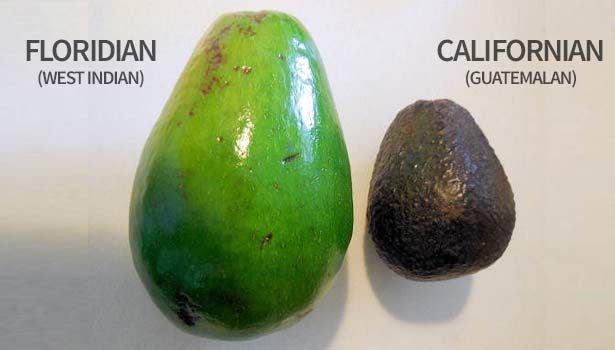Superfood Review: Avocado

The latest “superfood” to gain significant national attention, Avocado is garnering some pretty outrageous claims on the internet. Hailed as everything from an anti-aging potion to a cancer cure, avocado is turning up just about everywhere.
Perhaps not coincidentally, avocados are most readily available during the summer months, so any food chain looking to gain a “health conscious” image is perfectly positioned right now to cash in by adding it to everything from burgers to burritos. Usually for an extra charge.
Whether you love them, hate them, or are completely oblivious to them and want to know more – read on to get the low-down on “superfood” Avocado.
- Next: What are Avocados and where did they come from?
- Skip To: What is their nutritional value?
- Skip To: Popular ways to prepare them?
- Skip To: Health Benefits?
- Skip To: Risks and Considerations?
- Skip To: Final Verdict!
What are Avocados and where did they come from?
Avocado trees are native to Mexico and Central America, and the fruits have been used as a source of food further back in history than written records can account. The oldest known record of avocado use was found in a cave in Mexico, and is estimated to date back to 10,000 B.C.
Botanically, avocado fruits are classified as berries – and contain the largest berry seeds known to science. The tree itself is an evergreen, and typically will keep its’ leaves for 2-3 years before shedding them.
There are a tremendous number of avocado varieties, but the type you’re most likely familiar with in the USA is the Hass avocado. Originated in California and a descendant of Guatemalan ancestry, Hass avocados are medium sized, have dark bumpy skins, and have a very high oil content resulting in a rich, buttery flavor.
In Florida the Choquette, Lula and Taylor cultivars are also popular. These are derived from West Indian ancestry, so they’re typically large with shiny green skins and contain far less oil than the Guatemalan types.
A third ancestral group is also available depending on season and location – the Mexican cultivars. The most popular of this include the Zutano and Bacon types. They’re typically available in the spring and fall, and have a mild flavor.

If you were raised eating avocados as a child, you most likely got to experiment with sprouting and growing the very large seeds they contain. While this can be a fun science project, don’t expect to start harvesting your own fruits any time soon. Avocado seedlings usually take between 8 and 20 years before producing fruit. Besides this, commercial avocados are typically produced through grafting – so the fruit you may eventually get from a seedling will rarely resemble the original you sprouted.
The Nutritional Value of Avocados
Over-all, avocados average about 70% fat.
The particular nutritional content of an avocado will depend largely upon the cultivar chosen. Hass avocados in particular can have up to a 20% oil content, which puts them second only to olives as a source of oleic acid (a monounsaturated omega-9 fatty acid, considered a "good" fat).
The larger Florida avocado will on average contain 304 grams (a little under 1 ½ cup) of edible flesh, while the smaller and more popular California varieties average about 136 grams (a little over ½ cup).
Per cup, the Florida avocado contains 807mg of potassium and 13g of monounsaturated fat. It also has 66% of the USDA recommended intake of Vitamin C and 52% of the recommended dietary fiber.
By comparison, a cup of California avocado has 1166mg of potassium, 23g of monounsaturated fat, 33% of the recommended Vitamin C, 64% of the recommended dietary fiber – and as an added bonus, 35% of the recommended Vitamin B-6.
For comparison, an equal portion of banana paste contains 806mg of potassium, 24% daily dietary fiber, 32% daily Vitamin C and 40% Vitamin B-6.
Popular Ways to Prepare Avocado
For some purists, the only true and noble way to eat an avocado is plain, right out of the skin, with a spoon. That said, there are endless other ways to prepare and serve avocado.
Here are a few of the more popular choices for consideration:
#1 – Guacamole
Whether you like yours chunky, creamy, mixed with salsa or plain with sea salt, guacamole is a timeless classic. Originally invented by the Aztecs, the name in their native tongue literally translates to “avocado sauce.”
Its’ popularity on Super Bowl Sunday and Cinco de Mayo alone account for over 30 million pounds of avocado sales in the US.
Pro-Tip: Keep the seed! That creamy delicious yellow-green avocado flesh is notorious for turning brown quickly, and nothing is worse looking than a leftover bowl full of brown guacamole. If you put the avocado seed back into your guacamole before storing it however, it’ll stay pretty and green til you’re ready to finish it off!
#2 – Spread on Toast
Coming in a close second in popularity, avocado on toast is a simple but surprisingly versatile favorite. Some blend the avocado into a fine paste, others prefer it thick and chunky. There are those who recommend mixing in a soft-boiled egg, while others like to top theirs with a bit of greek yogurt. Most directions call for a sprinkling of salt and pepper. Some include cumin, chili powder or feta cheese.
My personal favorite (as mom used to make) is not to mash the avocado at all, but rather to layer slices and small pieces all over a thick slice of lightly buttered wheat toast – and then salt to taste.
#3 – In Salad
Typically cubed or sliced, avocado makes a great natural addition to salads of many kinds. This is especially helpful when you’re trying to watch your calories and lose weight, as the high fat content helps you feel satisfied sooner, and longer. The monounsaturated fat found in avocado also helps the body absorb more nutrients provided by the other ingredients.
#4 – In Sandwiches
There’s no debating that adding something creamy and savory to your sandwich is always an improvement. If you’re trying to eat healthy though, the typical choices like mayonnaise are off the menu. Thankfully, avocado is here to the rescue! Pair it up with some tomato and lettuce, spread on a fried egg, or mix with hummus and a sprinkling of your favorite cheese.
#5 – Butter Substitute
In case you’ve been completely oblivious to the whole trans-fat situation, you’ll know that healthy alternatives to butter are in short supply. Avocado with its’ high oil content and impressive nutritional properties tops a very short list of truly noteworthy choices.
As a general rule of thumb, substitute about half as much mashed avocado for the amount of butter a recipe calls for. Where ½ cup of butter is around 800 calories, the ¼ cup of avocado to replace it is less than 100.
PROS: The Health Benefits of Avocado
Blood Pressure
As noted above, avocados have more potassium than bananas. Adequate potassium intake has been shown to help maintain healthy blood pressure.
Depression
Avocados are crammed with Folic Acid (also known as Folate or Vitamin B-9). Folic acid plays a role in the production of serotonin, which itself is involved in regulating mood. Folic acid has been found to amplify the effects of antidepressants as well.
Digestion
Avocado is high in natural dietary fiber. As you might expect, this helps to keep your digestive system running cleanly and efficiently. What you might not think about however, is how this also reduces your risk of colon cancer.
Heart Health
People who maintain high fiber diets are statistically less at risk of developing coronary heart disease. Moreover, monounsaturated fatty acids are the most ideal form of dietary fat you can eat, and avocados are crammed with them. These are the same “heart healthy” fats found in olive oil.
Better still, studies have shown that eating avocados has a positive impact on cholesterol and triglycerides – which in turn reduces the risk of heart disease.
Preventing Cataracts
Avocados contain a number of useful antioxidants, including Zeaxanthin and Lutein. These nutrients in particular have been shown to dramatically reduce the risk of developing cataracts and macular degeneration. While eating avocados isn’t likely to cure you after the fact, it can be a powerful preventative measure.
Nutrient Absorption
Many nutrients require helper agents to be used by the body. Vitamins A, D, E and K in particular are fat soluble – meaning they must be combined with fat in order to be put to work in the system. Studies have shown that the additional fat provided by adding avocado to already nutritious foods like salads can increase antioxidant absorption by up to 15 times.
CONS: Potential Risks and Considerations
Even though the fat found in avocado is nutritionally helpful and all around beneficial, you can still easily overdo it by eating far too much.
If you take blood thinners, it would be wise not to dramatically and suddenly increase or decrease your intake of any foods (including avocados) that are high in Vitamin K, as this nutrient has a direct effect on blood clotting.
Finally, allergic reactions to avocado – while very rare – have been reported.
Of course… You already knew the cons list was going to be short.
Final Verdict
When the polls close and the votes are counted, avocado is indeed looking like a great choice for the health conscious individual. They serve as a low calorie butter substitute, improve heart health and happiness, and can improve nutrient absorption up to 15 fold.
Dieters will find avocado helpful because the fat it contains is beneficial and improves satiety. Just don’t overdo it. Remember, avocados are compressed little store houses of vitamins, nutrients… and calories.
At CFS, we try not to get caught up in the idea of “superfoods” because the term conveys a false sense that somehow the food in question has magical properties. When you think of superfoods, you often expect it to somehow help you melt away fat and lose inches off your waist – without changing your diet or even thinking about exercise. No food, pill, extract or berry will ever do this. Next time you hear about a "miracle in a bottle" remember that the only thing miraculous about the product is its' profitability.
There are however, such things as ideal foods. Foods that should be incorporated into your lifestyle as much as possible because they bring great health benefits.
Avocado is such a food. And thus, we give it a 5 star review of approval!
How did we do?

Rated 4.2 of 5 Stars by 133 readers.


